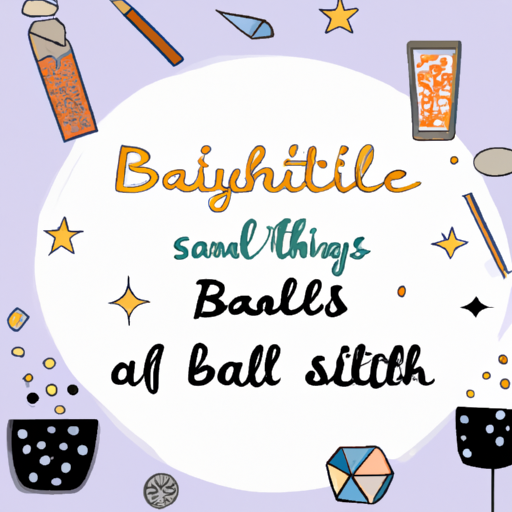Balancing the Good and Bad Habits in Your Life
Understanding and Balancing Your Good and Bad Habits
Good-bad-habits, the term itself sounds like an oxymoron, doesn’t it? However, when you delve deeper, you realize that everything has two sides to it. The habits we often label as ‘bad’ or ‘unproductive’ may have a productive silver lining hidden behind them. Conversely, the ‘good’ habits we pride ourselves on may not always be as beneficial as we perceive them to be.
Whether it’s video games, watching television, or even smoking, these habits are generally perceived as a waste of time. Yet, if we look past the negativity, we might find a productive aspect to each of these habits. For instance, playing video games can be seen as a social activity if enjoyed with friends. Television can also be educational if we choose the right content. Even smoking can be considered beneficial in certain contexts, like offering a way to socialize during work breaks or a means to calm down after a stressful day. However, it’s essential to not ignore the potential health effects of habits like smoking or excessive gaming.
Unraveling the Roots of Your Habits
Once you start seeing your bad habits in a positive light, your perspective changes. Suppose the benefits of smoking don’t outweigh the risks. In that case, you might want to consider services such as a women’s addiction treatment center to help you overcome the habit. This new perspective can motivate you to quit an addiction by focusing on the positive possibilities of letting go.
But it’s not just about reevaluating your bad habits. Your good habits need scrutiny too. For example, a gym-going lifestyle is generally considered healthy. But have you considered how much time it takes away from your day and the opportunities you miss out on? Going to the gym may be a positive habit, but if it becomes excessive, it might overwork your body, leading to adverse health effects in the long run. You could opt for alternative ways to exercise and socialize, like jogging with a friend or working out at home with your partner instead of the gym.
Finding the Right Balance
In essence, it’s crucial to consider both the positive and negative aspects of your good-bad-habits and balance them accordingly. It’s about creating a healthy equilibrium that allows you to enjoy the benefits of your habits without letting the drawbacks overpower your well-being.
So next time you find yourself labeling your habits, remember that it’s not always black and white. Every habit, good or bad, has its pros and cons. The key lies in understanding and balancing these aspects to create a lifestyle that suits you best.
Remember: The goal is not to eliminate all your bad habits or to adopt only good ones. Instead, it’s about making conscious choices, maintaining a balance, and being kind to yourself in the process.
FAQs
Q: How can I break a bad habit?
A: Understanding the root cause of your bad habit is the first step. Once you understand why you developed the habit in the first place, you can start finding ways to replace it with a healthier alternative.
Q: How can a ‘good’ habit be harmful?
A: A good habit can become harmful when done excessively. For example, over-exercising can lead to physical injuries and mental stress.
Q: What is the key to maintaining a balance between good and bad habits?
A: Awareness and conscious decision-making are key. It’s about acknowledging the positive and negative aspects of each habit and making a conscious choice that best supports your well-being.
| Habit | Perceived as Unproductive | Potential Productive Silver Lining | Considerations for Balance |
|---|---|---|---|
| Video Games | Yes | Social activity when played with friends | Limited screen time, playing games with educational value or physical activity |
| Watching Television | Yes | Educational when watching informative content | Limiting binge-watching, selecting content that promotes learning or personal growth |
| Smoking | Yes | Provides an opportunity for social interaction, stress relief | Consider healthier alternatives for stress relief and social interaction, seek help for addiction if needed |
| Gym-Going Lifestyle | No | Promotes physical health | Ensure not overworking the body, consider other forms of exercise and social interaction |

Breaking Down the Dichotomy of Good and Bad Habits
When we talk about habits, we often categorize them into two distinct groups: ‘good’ and ‘bad’. However, this binary view can often be misleading. Even the habits that are generally classified as ‘bad’ can serve a purpose or provide benefits in certain contexts. Similarly, ‘good’ habits may not always be universally positive. It all depends on the circumstances and how these habits are managed.
Understanding the Nature of Habits
Habits are essentially behaviors that we repeat regularly and tend to occur subconsciously. They are formed through learning and repetition. For instance, brushing your teeth every morning is a habit that you’ve learned and repeated until it became automatic. However, not all habits are as beneficial as this one. For example, constantly checking your phone can be considered a bad habit as it can lead to reduced productivity and increased stress levels.
The Silver Lining Behind ‘Bad’ Habits
While some habits are generally accepted as ‘bad’, it’s important to understand that they may not be entirely negative. For instance, procrastination is often seen as a bad habit. However, it can also be a sign that you need a break or that the task at hand is not engaging enough. In such cases, procrastination can act as a signal to rethink your approach or to take some time for relaxation and rejuvenation.
The Hidden Downsides of ‘Good’ Habits
On the flip side, ‘good’ habits can also have their drawbacks. For example, while maintaining a strict diet and exercise regime is generally seen as a good habit, it can lead to stress, obsession, and even eating disorders if not managed properly. Similarly, being overly punctual and sticking to a rigid schedule can limit your flexibility and adaptability.
Striking a Balance Between Your Habits
The key to managing your habits effectively lies in finding the right balance. This involves understanding the benefits and drawbacks of each habit and making conscious choices to maintain a healthy equilibrium. This balance is not about completely eradicating all your ‘bad’ habits or rigidly sticking to only ‘good’ ones. Instead, it’s about making informed decisions and adjustments based on your individual needs, circumstances, and well-being.
FAQs
Q: Can a ‘bad’ habit ever be good?
A: Yes, a ‘bad’ habit can have benefits in certain contexts. For instance, procrastination can be a signal that you need a break or a change in approach. However, it’s important to manage these habits effectively to prevent them from becoming detrimental.
Q: Can a ‘good’ habit ever be bad?
A: Yes, a ‘good’ habit can have drawbacks if it’s not managed properly. For example, a rigorous diet and exercise regime can lead to stress and eating disorders if it becomes obsessive.
Q: How can I find the right balance in my habits?
A: Finding the right balance in your habits involves understanding the benefits and drawbacks of each habit and making conscious choices based on your individual needs and well-being. It’s not about completely eliminating all ‘bad’ habits or only sticking to ‘good’ ones, but about making informed decisions and adjustments.
Ultimately, the concept of good-bad-habits is not as clear-cut as it may seem. By understanding the nuances of your habits and making conscious choices, you can strike a balance that best supports your well-being and lifestyle.
Additional FAQs
Q: How can I identify if my good habit is becoming harmful?
A: If your habit is causing physical discomfort or mental stress, or if it’s taking up too much of your time that it interferes with other important aspects of your life, it might be becoming harmful. It’s best to evaluate your habits regularly and make adjustments as needed.
Q: Can a bad habit have any benefits?
A: Yes, what’s traditionally considered a ‘bad’ habit can have benefits. For example, playing video games can enhance hand-eye coordination and problem-solving skills. However, it’s essential to balance these activities and not let them interfere with other aspects of your life.
Q: How can I balance my good-bad-habits?
A: Balancing your habits involves understanding the positive and negative aspects of each habit, making conscious choices that best support your well-being, and being kind to yourself in the process. It’s not about completely eliminating ‘bad’ habits but rather managing them in a way that they don’t negatively impact your life.
Q: How often should I reevaluate my habits?
A: It’s a good idea to regularly assess your habits. This could be done monthly, quarterly, or even yearly. The key is to make it a consistent part of your lifestyle.
Tables
| Habit | Positive Aspects | Negative Aspects |
|---|---|---|
| Gym-going | Physical fitness, stress relief | Time-consuming, potential for over-exertion |
| Playing video games | Social activity, enhances coordination and problem-solving skills | Can be addictive, sedentary lifestyle |
| Smoking | Socialization, stress relief | Health risks, addiction |
| Steps to Break a Bad Habit |
|---|
| 1. Identify the habit and understand its root cause |
| 2. Identify the triggers and patterns associated with the habit |
| 3. Find a healthier alternative to replace the habit |
| 4. Gradually implement the change and monitor progress |
| 5. Seek professional help if needed |

